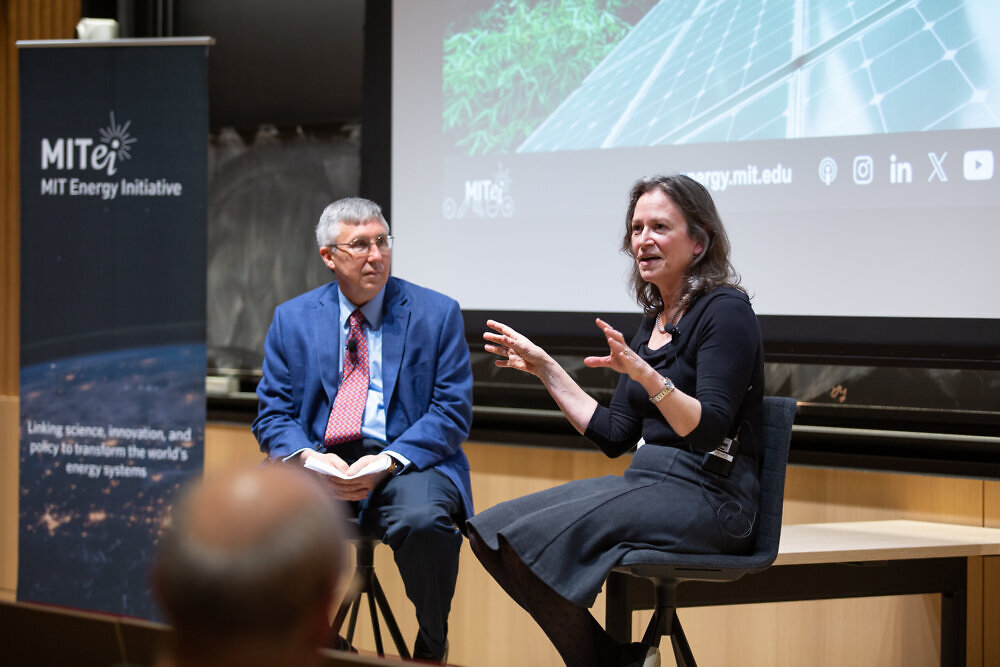
Kelley Travers
As the regularity and extent of extreme weather condition occasions expand, it might end up being increasingly required to utilize a bolder method to environment modification, advised Emily A. Carter, the Gerhard R. Andlinger Professor in Power and the Setting at Princeton University. Carter made her situation for why the energy shift is no more sufficient in the face of climate change while talking at the MITEI Offers: Progressing the Energy Shift seminar.
“If all we do is care for what we did in the past– however we do not change what we perform in the future– after that we’re still going to be entrusted to really major issues,” she said. Our approach to climate adjustment mitigation need to make up makeover, intervention, and adaption approaches, claimed Carter.
Transitioning to a decarbonized electrical energy system is one piece of the challenge. Growing quantities of solar and wind power– along with nuclear, hydropower, and geothermal– are slowly transforming the energy power landscape, but Carter noted that there are new technologies further down the pipe.
“Advanced geothermal might come on in the next couple of decades. Fusion will just truly begin to play a role later in the century, but could offer strong electrical power such that we can start to decommission nuclear,” said Carter, who is likewise a senior strategic consultant and associate lab supervisor at the Department of Power’s Princeton Plasma Physics Laboratory.
Taking this an action even more, Carter outlined how this carbon-free electricity needs to after that be utilized to energize whatever we can. She highlighted the commercial market as a crucial location for change: “The energy shift has to do with transitioning off of fossil fuels. If you consider the manufacturing markets, they are driven by fossil fuels today. They are driven by fossil fuel-driven thermal procedures.” Carter kept in mind that thermal energy is a lot less efficient than electricity and highlighted electricity-driven techniques that might change warmth in production, such as electrolysis, plasmas, light-emitting diodes (LEDs) for photocatalysis, and joule heating.
The transportation industry is likewise a key location for electrification, Carter claimed. While electrical vehicles have come to be increasingly usual in the last few years, sturdy transport is not as quickly electrified. The option? “Carbon-neutral gas for sturdy aviation and shipping,” she claimed, highlighting that these gas will certainly require to become part of the circular economic situation. “We know that when we burn those fuels, they’re mosting likely to generate CO 2 [carbon dioxide] once again. They need ahead from a resource of CO 2 that is not fossil-based.”
The next action is treatment in the kind of co2 elimination, which after that necessitates methods of storage and use, according to Carter. “There’s a lot of speak about constructing large numbers of pipelines to capture the carbon monoxide 2 — from fossil fuel-driven power plants, concrete plants, steel plants, all kind of industrial locations that send out carbon monoxide 2 — and then piping it and storing it underground,” she explained. Offshore pipelines are much more expensive than those ashore, but can mitigate public issues over their safety. Europe is specifically concentrating their efforts offshore for this extremely factor, and the very same could be real for the United States, Carter claimed.
Once carbon dioxide is captured, industrial application might supply economic leverage to increase sequestration, also if only a few gigatons are made use of per year, Carter noted. Via mineralization, CO 2 can be converted into carbonates, which might be made use of in structure materials such as concrete, and road-paving materials.
There is one more type of treatment that Carter presently views as a last resort: solar geoengineering, often called solar radiation administration (SRM). In 1991, Mount Pinatubo in the Philippines emerged and launched sulfur dioxide right into the air, which triggered a short-lived air conditioning of the Planet by ~ 0. 5 ° C for over a year. SRM looks for to recreate that cooling result by infusing particles right into the environment that show sunshine. According to Carter, there are 3 main methods: dizzying aerosol injection, cirrus cloud thinning (thinning clouds to allow more infrared radiation produced by the earth escape to space), and aquatic cloud brightening (brightening clouds with sea salt so they mirror extra light).
“My sight is I hope we do not ever have to do it, however I sure think we ought to recognize what would certainly happen in case somebody else just chooses to do it. It’s a global safety and security concern,” stated Carter. “In principle, it’s not so hard technically, so we want to really understand and to be able to predict what would take place if that occurred.”
With any kind of technology, stakeholder and area interaction is crucial for deployment, Carter said. She stressed the importance of both professionally paying attention to concerns and extensively addressing them, stating, “Hopefully, there’s enough information given to assuage their worries. We need to acquire the count on of individuals before any kind of implementation can be considered.”
A vital component of this count on starts with the responsibility of the clinical area to be transparent and critique each various other’s work, Carter claimed. “Suspicion is good. You need to have to show your proof of concept.”
MITEI Provides: Progressing the Energy Shift is an MIT Power Campaign speaker series highlighting power professionals and leaders at the leading edge of the clinical, technical, and plan services needed to change our power systems. The series will certainly proceed in Loss 2025 For more details on this and additional occasions, go to: energy.mit.edu/events/